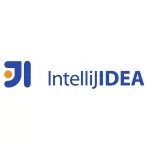ETL/ELT Data Pipelines: A Comparative Overview
In the realm of data engineering, ETL (Extract, Transform, Load) and ELT (Extract, Load, Transform) are two primary methodologies for moving data from diverse sources into a centralized repository. While both involve extracting and loading data, their approaches to data transformation diverge significantly, impacting factors like data volume, complexity, and overall pipeline efficiency.
1. ETL vs ELT
ETL (Extract, Transform, Load)
ETL has been the traditional workhorse of data integration for many years. It involves a three-step process:
- Extract: Data is extracted from various sources, including databases, files, APIs, and applications.
- Transform: Extracted data is cleaned, standardized, aggregated, and transformed into a desired format suitable for analysis. This step often includes data cleansing, imputation, aggregation, and calculations.
- Load: Transformed data is loaded into a target system, typically a data warehouse or data mart.
Key characteristics of ETL:
- Data Quality: ETL processes often include rigorous data quality checks and transformations to ensure data accuracy and consistency.
- Performance: ETL can be optimized for performance by using efficient data extraction, transformation, and loading techniques.
- Tooling: Numerous ETL tools and platforms are available, offering a range of features and capabilities.
- Complexity: ETL can be complex, especially for large and complex data integration projects.
ELT (Extract, Load, Transform)
ELT has emerged as a popular alternative to ETL, particularly for handling large volumes of data and complex data structures. The process involves:
- Extract: Data is extracted from various sources.
- Load: Extracted data is loaded into a data warehouse or data lake in its raw format.
- Transform: Data is transformed and cleaned within the data warehouse or data lake using tools and languages like SQL, Python, or specialized data processing frameworks.
Key characteristics of ELT:
- Tooling: A combination of data ingestion tools and data processing frameworks is typically used.
- Scalability: ELT is well-suited for handling large volumes of data and can scale to accommodate increasing data loads.
- Flexibility: The delayed transformation in ELT allows for more flexibility in data exploration and analysis.
- Cloud Integration: ELT often leverages cloud-based data warehouses and data lakes, enabling cost-effective scalability and elasticity.
Key Differences
| Feature | ETL | ELT |
|---|---|---|
| Transformation Timing | Before loading | After loading |
| Data Volume | Suitable for smaller datasets | Ideal for large datasets |
| Data Complexity | Better for structured data | Handles structured, unstructured, and semi-structured data |
| Flexibility | Less flexible | Highly flexible |
| Tooling | Specialized ETL tools | Data warehousing and processing tools |
2. Choosing Between ETL and ELT
The decision to use ETL or ELT depends on several factors:
- Data volume and velocity: For large and rapidly changing datasets, ELT is often preferred.
- Data complexity: If data requires extensive transformations, ETL might be more suitable.
- Data quality requirements: ETL is generally better for ensuring data quality upfront.
- IT resources and expertise: ELT may require additional data engineering skills and tools.
- Data warehouse or data lake architecture: The target system’s capabilities can influence the choice.
In many cases, a hybrid approach combining elements of both ETL and ELT can be effective. For example, initial data cleansing and transformation can be performed using ETL, followed by further processing and analysis using ELT techniques.
3. Wrapping Up
The choice between ETL and ELT depends on various factors, including data volume, complexity, desired level of flexibility, and available resources. While ETL remains a reliable option for smaller, well-defined datasets, ELT has gained popularity due to its ability to handle large, diverse data volumes and its adaptability to changing business requirements. Ultimately, the optimal approach involves a careful evaluation of specific project needs and constraints.



